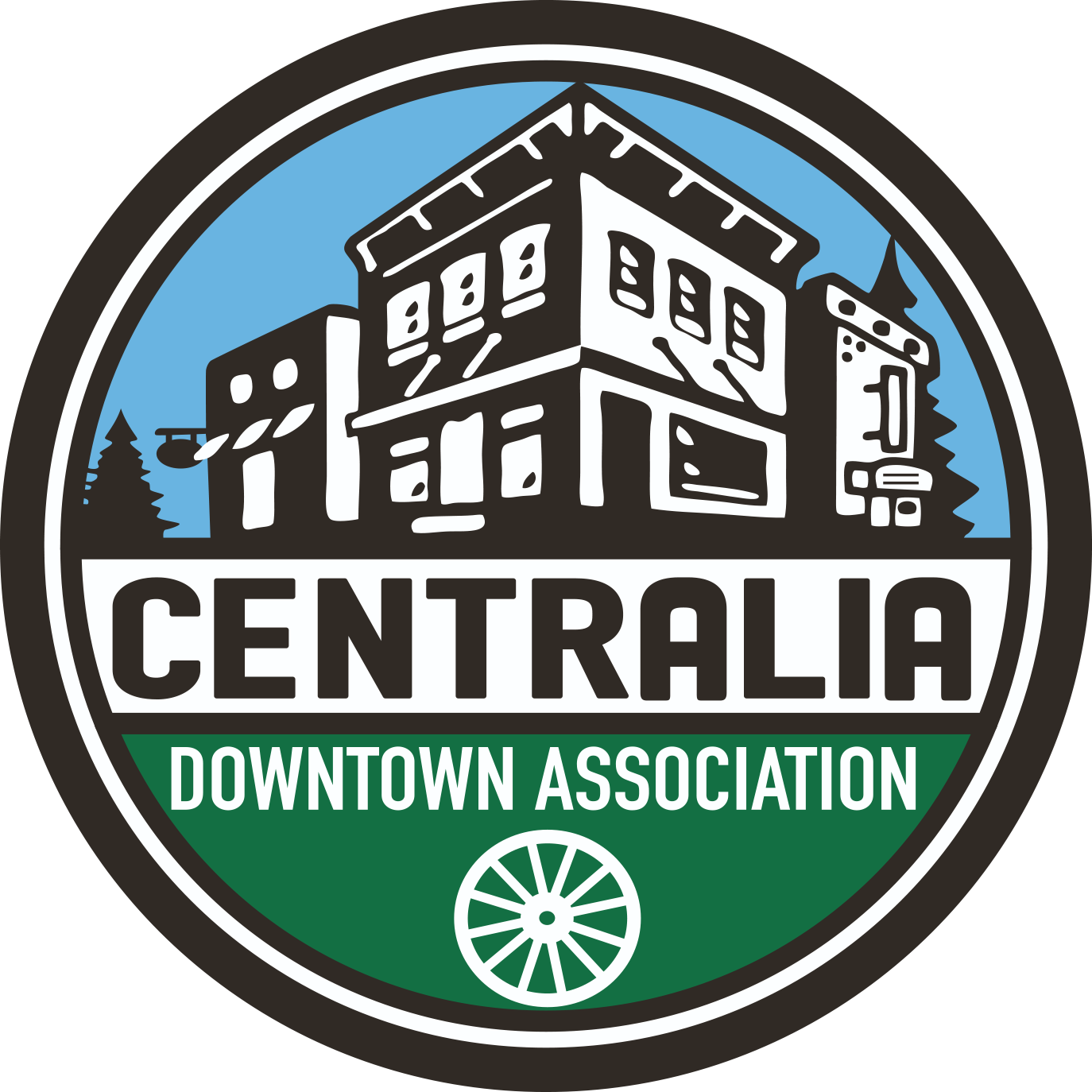Centralia Depot
THE UNION DEPOT
by Joyce Tennant
INTRODUCTION
Turn the corner from Main Street onto Railroad Avenue in Centralia, and instantly time is turned back to the beginning of the twentieth century. The 1890’s were a boom period for Centralia. The city was ballooning into the 20th century with a population of 5500. The railroad, therefore, built a large depot. It is a beautiful example of fine brick ornamentation, magnificent interior woodwork, detailed tile work, and oak benches famous in this era. Like other depots of its day, it is three buildings under one roof, but the roof details were what distinguished it from others.
The Carnegie Library, the Dumon Building, and the Union Depot were completed and dedicated in 1912 as part of the week long Hub City Festival. As Centralia’s first aviator, Claude Berlin was given three bottles of champagne to drop on each building as part of the ceremony. Unfortunately, only one bottle hit its target - the Depot - breaking some tiles on the roof.
HISTORY
When the Northern Pacific Railroad began laying track across George Washington’s land in 1872, he saw a potential for a town being built here. The location was ideal because it was half way between Tacoma and Kalama. With a town developing, the railroad realized a depot was required. If George Washington had not developed Centralia (originally named Centerville), the railroad probably would have built the depot in the Grand Mound area. Centralia’s first depot was built in 1880 on the corner of Main Street and Railroad Avenue. It was a small wood framed building. In 1905, at the comer of Third Street and Railroad Avenue, a larger, yet still small, wood depot was erected and painted red. This building was known as “Noah’s Ark” due to its architectural design. Centralia’s third and final depot was built in 1912, at a cost of $35,000. It is located near the heart of downtown, at the comer of Railroad Avenue and Pine Street In the early 1900’s Centralia was growing rapidly. Therefore, Northern Pacific Railroad built a depot large enough to serve a city with a population of 50,000 people. This attracted five railroad companies, and because of this, Centralia became known as “The Hub”. The following year, 1913, the round house was built. Northern Pacific, Burlington Northern, the Union Pacific, and Great Northern were four of the rail companies that used these tracks.
In his book, Recycling~ Historic Railroad Stations. Paul McGinley notes that “the railroad station was usually built as the gateway into the city, to impress arriving passengers with the town’s wealth or economic stature. The size of the station, the style of its architecture and the lavishness of its interior were reflections of the community’s economic and social character, its taste, and self image... consequently, the station is often one of the finest and most prominent buildings in the community and a superb expression of the community’s individuality and local character.”
This third depot is composed of three separate buildings under one roof. making it one block long. The south building stored freight, the north building housed offices, and the center section was for passengers. The red brick construction is very typical of medium sized stations built in the early 1900’s. It is thought the Chehalis Brick and Tile Company made the bricks that decorate the building inside and out. The original roof was tile, and this company probably made the tiles, also.
Each depot built at this time had its own personal variation in details, such as the gable ends, pediments, and roof lines to give each structure a slightly different and unique appearance. Centralia’s depot has decorative pyramids on the two freestanding gable-like walls at the roof line which separate both ends of the depot from a two-story middle section. Brick dentils follow all the roof lines creating an appealing sight. Ornate windows above each door and window are composed of six inch square panes of glass.
The original interior woodwork, tiling, and oak benches remain as a reminder of what a grand station it was. Also visible along the composed base of the building arc the original stenciled warnings stating “Don’t spit.” The walkways are laid out in a unique herringbone brick pattern and are still in remarkably good condition.
At the turn of the century everyone traveled by train. This form of transportation was affordable for ordinary people and glamorous for the wealthy. Most passenger trains by then had a dining car and first, second, and third class travel accommodations. Excursion trips to the beaches would carry between 1,000 and 1,500 passengers. (Centralia’s First Century) By 1914 forty-four passenger trains and seventeen freight trains passed through Centralia daily.
It is interesting to note that Railroad Avenue is owned by Northern Pacific. That explains why some maps don’t show it as a street.
Centralia Depot in 1912
CONCLUSION
Reusing railroad stations, according to Hardy, Holtzman, Pfeiffer, and Associates, is a business venture that can at the least be self supporting. The Centralia station would make a great centerpiece for marketing the entire city. One of Centralia’s most powerful assets is its location. Situated half way between Seattle and Portland an between I-5 and the railroad tracks, Centralia is a natural attraction for millions of people. Repairs and renovations to the depot will begin July, 1995.
WORKS CITED
Calkins, Terry. City of Centralia, Public Works Administrator. Personal interviews. 21 June 1994 and 25 July 1994.
Citizens of Centralia. Centralia’s First Century. 1845 - 1945. Bicentennial Edition.
